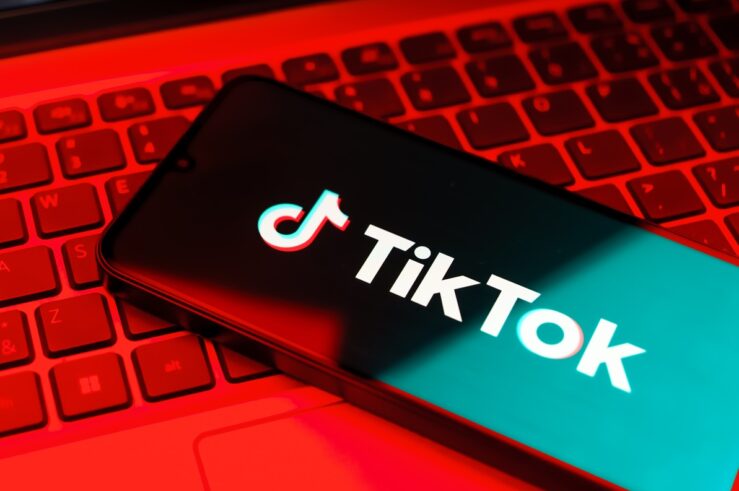On February 13 an administrative law judge (ALJ) at the California Public Utility Commission (CPUC) issued a proposed decision regarding the Comcast/Time Warner Cable (TWC) merger. The proposed decision recommends that the CPUC approve the merger with conditions.
It’s laudable that the ALJ acknowledges at least some of the competitive merits of the proposed deal. But the set of conditions that the proposed decision would impose on the combined company in order to complete the merger represents a remarkable set of unauthorized regulations that are both inappropriate for the deal and at odds with California’s legislated approach to regulation of the Internet.
According to the proposed decision, every condition it imposes is aimed at mitigating a presumed harm arising from the merger:
The Applicants must meet the conditions adopted herein in order to provide reasonable assurance that the proposed transaction will be in the public interest in accordance with Pub. Util. Code § 854(a) and (c).… We only adopt conditions which mitigate an effect of the merger in order to satisfy the public interest requirements of § 854.
By any reasonable interpretation, this would mean that the CPUC can adopt only those conditions that address specific public interest concerns arising from the deal itself. But most of the conditions in the proposed decision fail this basic test and seem designed to address broader social policy issues that have nothing to do with the alleged competitive effects of the deal.
Instead, without undertaking an analysis of the merger’s competitive effects, the proposed decision effectively accepts that the merger serves the public interest, while also simply accepting the assertions of the merger’s opponents that it doesn’t. In the name of squaring that circle, the proposed decision seeks to permit the merger to proceed, but then seeks to force the post-merger company to conform to the merger’s critics’ rather arbitrary view of their preferred market structure for the provision of cable broadband services in California.
For something — say, a merger — to be in the public interest, it need not further every conceivable public interest goal. This is a perversion of the standard, and it turns “public interest” into an unconstrained license to impose a regulatory wish-list on particular actors, outside of the scope of usual regulatory processes.
While a few people may have no problem with the proposed decision’s expansive vision of Internet access regulation, California governor Jerry Brown and the overwhelming majority of the California state legislature cannot be counted among the supporters of this approach.
In 2012 the state legislature passed by an overwhelming margin — and Governor Brown signed — SB 1161 (codified as Section 710 of the California Public Utilities Code), which expressly prohibits the CPUC from regulating broadband:
The commission shall not exercise regulatory jurisdiction or control over Voice over Internet Protocol and Internet Protocol enabled services except as required or expressly delegated by federal law or expressly directed to do so by statute or as set forth in [certain enumerated exceptions].”
The message is clear: The CPUC should not try to bypass clear state law and all institutional safeguards by misusing the merger clearance process.
While bipartisan majorities in the state house, supported by a Democratic governor, have stopped the CPUC from imposing new regulations on Internet and VoIP services through SB 1161, the proposed decision seeks to impose regulations through merger conditions that go far beyond anything permitted by this state law.
For instance, the proposed decision seeks to impose arbitrary retail price controls on broadband access:
Comcast shall offer to all customers of the merged companies, for a period of five years following the effective date of the parent company merger, the opportunity to purchase stand-alone broadband Internet service at a price not to exceed the price charged by Time Warner for providing that service to its customers, and at speeds, prices, and terms, at least comparable to that offered by Time Warner prior to the merger’s closing.
And the proposed decision seeks to mandate market structure in other insidious ways, as well, mandating specific broadband speeds, requiring a break-neck geographic expansion of Comcast’s service area, and dictating installation and service times, among other things — all without regard to the actual plausibility (or cost) of implementing such requirements.
But the problem is even more acute. Not only does the proposed decision seek to regulate Internet access issues irrelevant to the merger, it also proposes to impose conditions that would actually undermine competition.
The proposed decision would impose the following conditions on Comcast’s business VoIP and business Internet services:
Comcast shall offer Time Warner’s Business Calling Plan with Stand Alone Internet Access to interested CLECs throughout the combined service territories of the merging companies for a period of five years from the effective date of the parent company merger at existing prices, terms and conditions.
Comcast shall offer Time Warner’s Carrier Ethernet Last Mile Access product to interested CLECs throughout the combined service territories of the merging companies for a period of five years from the effective date of the parent company at the same prices, terms and conditions as offered by Time Warner prior to the merger.
But the proposed decision fails to recognize that Comcast is an also-ran in the business service market. Last year it served a small fraction of the business customers served by AT&T and Verizon, who have long dominated the business services market:
According to a Sept. 2011 ComScore survey, AT&T and Verizon had the largest market shares of all business services ISPs. AT&T held 20% of market share and Verizon held 12%. Comcast ranked 6th, with 5% of market share.
The proposed conditions would hamstring the upstart challenger Comcast by removing both product and pricing flexibility for five years – an eternity in rapidly evolving technology markets. That’s a sure-fire way to minimize competition, not promote it.
The proposed decision reiterates several times its concern that the combined Comcast/Time Warner Cable will serve more than 80% of California households, and “reduce[] the possibilities for content providers to reach the California broadband market.” The alleged concern is that the combined company could exercise anticompetitive market power — imposing artificially high fees for carrying content or degrading service of unaffiliated content and services.
The problem is Comcast and TWC don’t compete anywhere in California today, and they face competition from other providers everywhere they operate. As the decision matter-of-factly states:
Comcast and Time Warner do not compete with one another… [and] Comcast and Time Warner compete with other providers of Internet access services in their respective service territories.
As a result, the merger will actually have no effect on the number of competitive choices in the state; the increase in the statewide market share as a result of the deal is irrelevant. And so these purported competition concerns can’t be the basis for any conditions, let alone the sweeping ones set out in the proposed decision.
The stated concern about content providers finding it difficult to reach Californians is a red herring: the post-merger Comcast geographic footprint will be exactly the same as the combined, pre-merger Comcast/TWC/Charter footprint. Content providers will be able to access just as many Californians (and with greater speeds) as before the merger.
True, content providers that just want to reach some number of random Californians may have to reach more of them through Comcast than they would have before the merger. But what content provider just wants to reach some number of Californians in the first place? Moreover, this fundamentally misstates the way the Internet works: it is users who reach the content they prefer; not the other way around. And, once again, for literally every consumer in the state, the number of available options for doing so won’t change one iota following the merger.
Nothing shows more clearly how the proposed decision has strayed from responding to merger concerns to addressing broader social policy issues than the conditions aimed at expanding low-price broadband offerings for underserved households. Among other things, the proposed conditions dramatically increase the size and scope of Comcast’s Internet Essentials program, converting this laudable effort from a targeted program (that uses a host of tools to connect families where a child is eligible for the National School Lunch Program to the Internet) into one that must serve all low-income adults.
Putting aside the damage this would do to the core Internet Essentials’ mission of connecting school age children by diverting resources from the program’s central purpose, it is manifestly outside the scope of the CPUC’s review. Nothing in the deal affects the number of adults (or children, for that matter) in California without broadband.
It’s possible, of course, that Comcast might implement something like an expanded Internet Essentials program without any prodding; after all, companies implement (and expand) such programs all the time. But why on earth should regulators be able to define such an obligation arbitrarily, and to impose it on whatever ISP happens to be asking for a license transfer? That arbitrariness creates precisely the sort of business uncertainty that SB 1161 was meant to prevent.
The same thing applies to the proposed decision’s requirement regarding school and library broadband connectivity:
Comcast shall connect and/or upgrade Internet infrastructure for K-12 schools and public libraries in unserved and underserved areas in Comcast’s combined California service territory so that it is providing high speed Internet to at least the same proportion of K-12 schools and public libraries in such unserved and underserved areas as it provides to the households in its service territory.
No doubt improving school and library infrastructure is a noble goal — and there’s even a large federal subsidy program (E-Rate) devoted to it. But insisting that Comcast do so — and do so to an extent unsupported by the underlying federal subsidy program already connecting such institutions, and in contravention of existing provider contracts with schools — as a condition of the merger is simple extortion.
The CPUC is treating the proposed merger like a free-for-all, imposing in the name of the “public interest” a set of conditions that it would never be permitted to impose absent the gun-to-the-head of merger approval. Moreover, it seeks to remake California’s broadband access landscape in a fashion that would likely never materialize in the natural course of competition: If the merger doesn’t go through, none of the conditions in the proposed decision and alleged to be necessary to protect the public interest will exist.
Far from trying to ensure that Comcast’s merger with TWC doesn’t erode competitive forces to the detriment of the public, the proposed decision is trying to micromanage the market, simply asserting that the public interest demands imposition of it’s subjective and arbitrary laundry list of preferred items. This isn’t sensible regulation, it isn’t compliant with state law, and it doesn’t serve the people of California.




